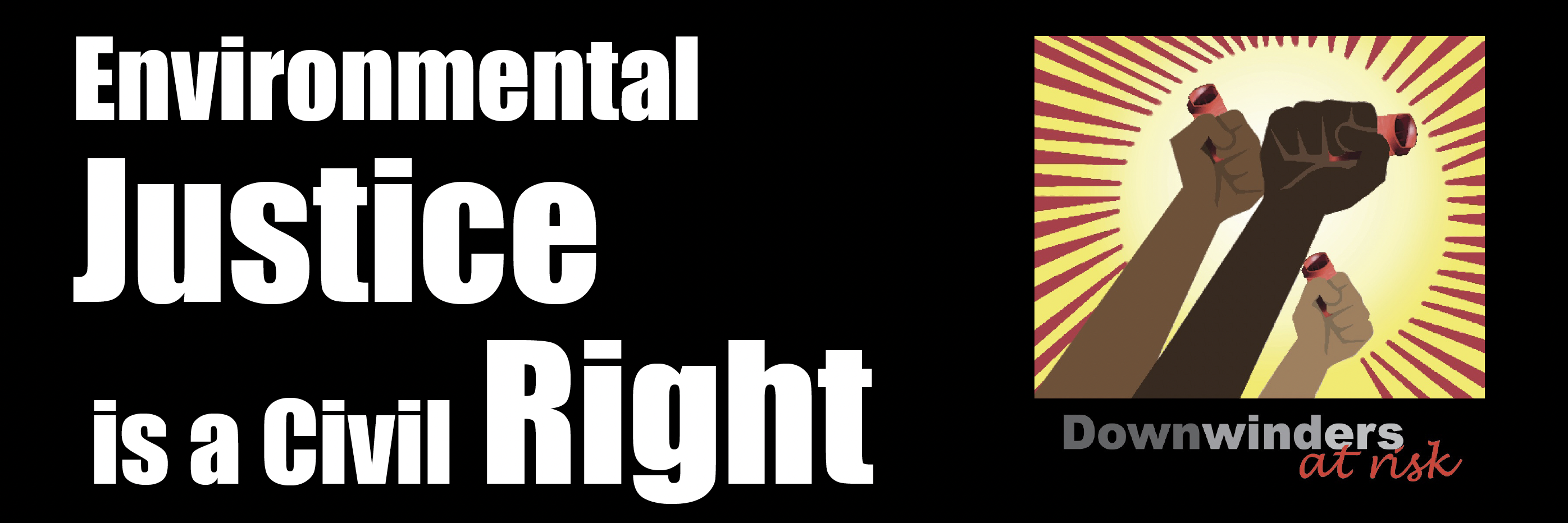Natural Gas
Energy Dependence: Fracking in Texas Relies on Guar From India
 Because "without guar, you cannot have fracturing fluids," and 85% of the world's guar is grown in a large desert in india. So to exploit American natural gas, operators must rely almost completely on a foreign import.
Because "without guar, you cannot have fracturing fluids," and 85% of the world's guar is grown in a large desert in india. So to exploit American natural gas, operators must rely almost completely on a foreign import.
Follow-up: Homeowners Insurance Won’t Cover Fracking Losses
In the light of Nationwide's decison to quit writing policies for those who lease land to frackers, the Hartford Courant did a quick round of call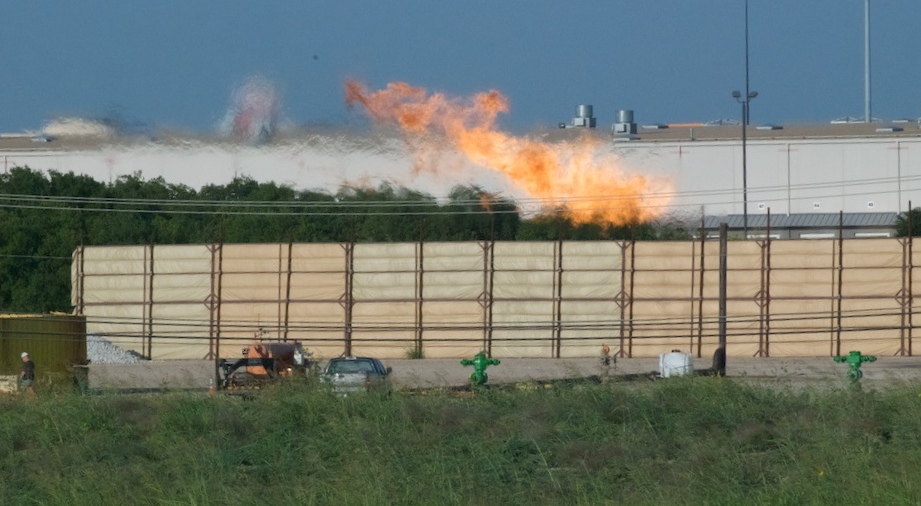 s and discovered that homeowners were already up a creek when it came to any damge from gas drilling they might incur:
s and discovered that homeowners were already up a creek when it came to any damge from gas drilling they might incur:
"If the ground shifts at a fracking site and breaks the foundation of a nearby home, or if the chemicals taint a drinking-water well, standard homeowner and commercial-property policies won't cover the cost, said Robert Hartwig, president of the Insurance Information Institute, a property-casualty resource and trade group. Standard property-insurance policies cover a specific set of calamities, such as fire, lightning, thunderstorms, ice and hail.
"There's really no distinction here between fracking or any other, say, mining, operation here," Hartwig said. "This sort of thing is not covered by the policy and it never was."
Nationwide Insurance Makes It Official: Fracking is a Bad Risk
 After circulating on citizen group blogs in upstate New York for a day or two, Nationwide Mutual Insurance Company confirmed that an internal memo outlining new prohibitions on insuring individuals or businesses who lease land for natural gas fracking was authentic and reflected company policy. With the disclosure Nationwide becomes the first insurance company to say it won't cover damages caused by horizontal fracturing.
After circulating on citizen group blogs in upstate New York for a day or two, Nationwide Mutual Insurance Company confirmed that an internal memo outlining new prohibitions on insuring individuals or businesses who lease land for natural gas fracking was authentic and reflected company policy. With the disclosure Nationwide becomes the first insurance company to say it won't cover damages caused by horizontal fracturing.
According to the memo,
“After months of research and discussion, we have determined that the exposures presented by hydraulic fracturing are too great to ignore. Risks involved with hydraulic fracturing are now prohibited for General Liability, Commercial Auto, Motor Truck Cargo, Auto Physical Damage and Public Auto (insurance) coverage.”
This prohibition applies to landowners who lease land for shale gas drilling, and contractors involved in fracking operations, including those who haul water to and from drill sites; pipe and lumber haulers; and operators of bulldozers, dump trucks and other vehicles used in drill site preparation. That's a lot of the gas fuel cycle suddenly not covered.
Nationwide is the first to de-couple itself from fracking, but we bet it isn't the last. Some analysts were suggesting that negative publicity surrounding the fracking process influenced Nationwide's decision. Given the discovery rate of new hazards associated with fracking over the last two years, that's not a factor likely to get better with time.
It may be that at by the time all the dust settles, the gas industry will have to depend on some kind of massive government bailout to even be able to get fracking insurance. This is the same problem the nuclear power industry faced 50 years ago. No sane insurance company would offer coverage for a nuclear power plant, so the federal government stepped in and subsidized it in the form of the Price-Anderson Act. Without this literal Act of Congress, there wouldn't even be one nuclear power plant in the U.S.
Insurance companies aren't politically bias. They aren't partisan. They aren't treehuggers. They operate according to cold hard stats. And now those stats say fracking is a very bad risk. So bad that at least one major carrier has stopped even offering policies that cover damage from it.
If, like the City of Dallas, you were hoping to lease your land for natural gas drilling, this is something that should concern you.
As Gas Mining Moves East, So Do Smog Violations
Failing the Test on Smog
 This is a response to statements in this.
This is a response to statements in this.
1) "The downward trend" that Mr Clawson of TCEQ says has only been "interrupted," is, in fact continuing, and he knows this because it's TCEQ monitoring that's proving it. This last March saw the highest ozone levels ever recorded for that month since TCEQ air quality monitoring began in 1997. It's only June, and there are already two monitors whose three-year runing average "Design Value" is above the old 85 ppb standard. The "best ever" ozone summer we were supposed to experience this year, according to TCEQ's prediction to EPA submitted in December, is completely off the rails.
2) The "87 ppb" Design Value Mr. Clawson cites is from 2010. Last year it was 92 ppb – at the Keller monitor. This year so far, the Keller monitor is already at a Design Value of 87, a violation of the old standard and something TCEQ said would not happen.
3) The NCTCOG claim that,"the DFW region has a tougher time than other metropolitan areas in the U.S. because of its climate plus its position downwind from outside sources of pollution" is also misleading. Houston is a hotspot for bad air, and yet last year DFW exceeded the number of bad air days and the severity of the violations in that city. Other metropolitan ares downwind of power plants as well as DFW, and yet they've all managed to do better in achieving cleaner air. Atlanta, Phoenix, and other Sunbelt cities that started out at the same smoggy spot a decade ago have all conquered the old 85 ppb std. DFW has not. It's already blown it again this year. Instead of blaming climate or coal plants, it is more realistic to blame DFW's air quality failure on a lack of political will by local and state officials to get serious about decreasing air pollution.
However, there is one large area of policy where the excuses of lack of will and new downwind sources collide – in the official lack of attention paid to the rise of Barnett and Haynesville Shale gas pollution as a source of smog in DFW.
4) The statement that only "5 percent" of the smog-forming emissions in DFW come from oil and gas drilling and production is also highly misleading. First, we know this is one of the fastest-growing categories of air pollution over the last decade. The increase in gas pollution is erasing decreases in emissions from other sources. Second, according to the information submitted by TCEQ to EPA last December, oil and gas emissions are the second largest source (20%) of smog-forming Volatile Organic Compounds, or VOCs in the 9-county DFW non-attainment area. That's more than the total VOCs produced by all on-road vehicles in the same 9 county area. Based on recent field studies by NOAA and others, this is probably an underestimate.
This statement also ignores the impact of gas emissions to the south and east of DFW, like Freestone County's, that are not included in the 9-county area inventory, but are probably influencing air pollution here.
What's always left out of this pie chart is the fact that cars now have a removal efficiency of approximately 90%. No other major sources come close to that kind of effort, despite technology being available to achieve it – at cement kilns, gas operations. and coal plants. That's where "the lowest hanging fruit" remains. But since all those industries are large contributors to the politicians directing the status quo, there's no political will to target them. Exhibit A: the 2011 DFW clean air plan submitted by the state, which relies primarily on marketplace forces to replace old cars with new ones, instead of any new round of pollution controls for any industry sources.
5) The NCTCOG claim that "monitors in the north Dallas and Frisco areas have had the highest readings of the region but the plume seems to be shifting west" is also based on old data. In fact, the opposite is occurring. Violating monitors are moving EAST (just like gas mining). And there are more of them. From 2008 to 2010, Eagle Mountain Lake and Keller were the epicenter of smog in DFW. But in 2011, while Keller tripped the std, EML did not. Moreover, during that same 08-10 period there were only 1-3 monitors in violation of that std. Last year, there were seven. And they included not just Keller and Parker County, but Denton, Grapevine, Pilot Point, Frisco and North Dallas – directly in contradiction to the NCTCOG claim.
This year, the very first monitor to record four "exceedances" of the 85ppb std was located near Mockingbird and I-35 in Central Dallas – the first time that monitor has done so since 2005. Moreover, the fourth exceedance came in June – the earliest that has happened since 2006, when 12 out of 19 monitors were in violation at the end of the summer.
As much as the officials and agencies would like us all to ignore the summer of 2011 and think of it as an aberation, it would be more prudent to see it as another warning sign that DFW needs to do much more to get safe and legal air.
The Petrochemical Circle of Smog
 Here's a piece by Texas Tribune off-shoot "State Impact" that more or less revels in the news that the Shale boom in Texas and elsewhere is now finally making its presence felt in the petrochemical capital of the world – the Houston Ship Channels and surrounding communities long the Gulf Coast. Fracking has made natural gas and its condensates so cheap and plentiful that billions are being spent to build new plastics manufacturing and processing plants. It's the "re-birth of the U.S. petro-chemical industry," to quote one producer.
Here's a piece by Texas Tribune off-shoot "State Impact" that more or less revels in the news that the Shale boom in Texas and elsewhere is now finally making its presence felt in the petrochemical capital of the world – the Houston Ship Channels and surrounding communities long the Gulf Coast. Fracking has made natural gas and its condensates so cheap and plentiful that billions are being spent to build new plastics manufacturing and processing plants. It's the "re-birth of the U.S. petro-chemical industry," to quote one producer.
Already the hub of something like 60% of all petrochemical capacity in the US, the Houston/Harris County area has an on-going historical struggle with air pollution. Residents who live near huge facilities like the Exxon-Mobil Baytown Refinery are always on guard against catastrophic accidents, much less the daily or weekly indignities of breathing its perfectly legal voluminous air pollution. Much of the pollution is not only toxic but also adds to Houston's smog problems.
These new Shale-driven facilities, while cleaner than their older counterparts, will nevertheless be adding tens of thousands of tons of new air pollution to the Houston skies. That's going to complicate things for getting cleaner air in Houston. They haven't really mastered how to have clean air after the first birth of the petrochemical industry, much less a rebirth.
DFW is downwind of Houston. When it's harder for Houston to achieve cleaner air, it's also harder for DFW. What else makes it harder for DFW to achieve cleaner air? Large new sources of Un-and-under-regulated emissions from Shale gas mining.
So gas is mined and processed here in North Texas, where it adds to a chronic air quality problem for us. Then it's shipped to Houston, where it's use in making new plastic adds to chronic air quality problems for that city, as well as returning via predominate winds during ozone season to further contribute to deteriorating air quality here in DFW. It's the Petrochemical Circle of Smog.
CDC Issues Health Alert on Silica in Fracking
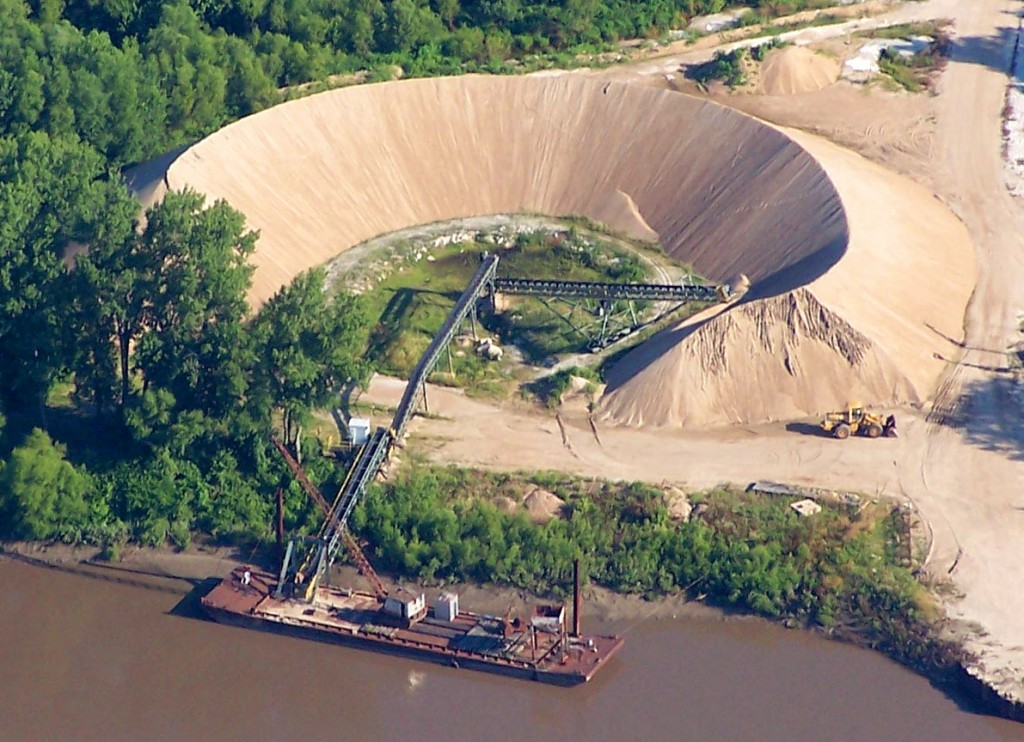 Last Thursday an arm of the Centers for Disease Control issued a "Hazard Alert" concerning exposure to Silica pollution at fracking drilling site. This comes after nationwide tests by the National Institute for Occupational Safety and Health at 11 well pads showed alarmingly high Silica levels in the air.
Last Thursday an arm of the Centers for Disease Control issued a "Hazard Alert" concerning exposure to Silica pollution at fracking drilling site. This comes after nationwide tests by the National Institute for Occupational Safety and Health at 11 well pads showed alarmingly high Silica levels in the air.
Silica is tiny sand particles. Breathe too many of them and you get Silicosis, a disease that literally suffocates you to death by putting down a layer of cement between you and your alveoli.
All the tests were at and around the drilling pad sites, not off-site, so we don't know what kind of hazard Silca pollution poses to surrounding residents. But the levels were so high at the pads that it's hard to believe it's never a factor. Reportedly, the amount of sand being used in fracking has significantly increased over the last decade.
For people west of DFW, that means more sand mining, and sand mining pollution in the Brazos and Red River valleys. For people near drilling sites, it could mean more air pollution nobody was trying to inventory until now.
Silica pollution wasn't even an issue of concern with fracking until somebody at the NIOSH decided to go looking for it. Who knows how many other fracking hazards are waiting to be discovered?
Will Dallas Council Listen to the Dallas Morning News?
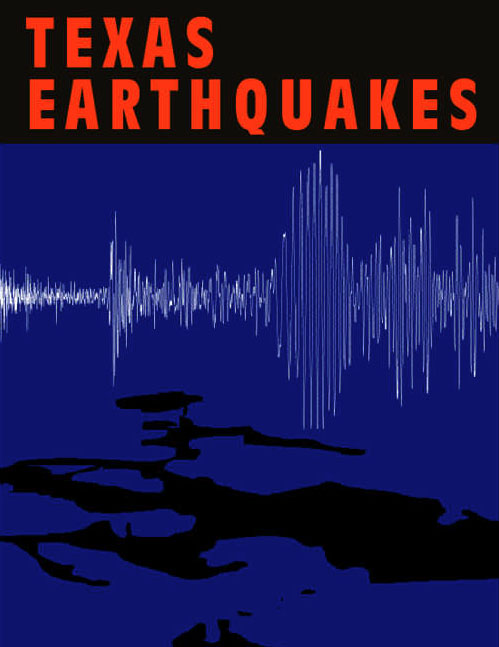 Today's editorial in the Morning News on Injection wells is a good one, although you'd like it to add the lack of any good waste disposal options for billions of gallons of contaminated fracking fluid to the reasons not to allow fracking at all.
Today's editorial in the Morning News on Injection wells is a good one, although you'd like it to add the lack of any good waste disposal options for billions of gallons of contaminated fracking fluid to the reasons not to allow fracking at all.
At its core, the argument is whether it's fair for a city like Dallas to make a profit from gas drilling while banning the logical results of that drilling to rural areas where residents there must bear a disproportional risk of earthquakes and other hazards.
But if the Dallas City Council was looking at a short way to describe its job of writing a new gas drilling ordinance in August, this is a pretty good candidate:
"…increase setbacks of drilling operations from schools, churches, other buildings and levees, regulate the use of water during drought conditions and ensure that drilling operations don’t worsen air quality."
There were already plenty of reasons to be cautious about frackign anywhere, but it's the fact that new hazards are being "discovered" at a quickening pace that should be of equal concern.
Earthquakes from injection wells wasn't even a topic of concern two years ago and now it's becoming a scientific consensus. Silica pollution was an unknown danger until recent testing showed levels of it off the charts at fracking sites. It's all the things we don't know yet about the consequences of fracking that should give any official pause before allowing it close to people or valuable natural resources. Injection wells is just one example of that unknown.
Fracking Call to Action
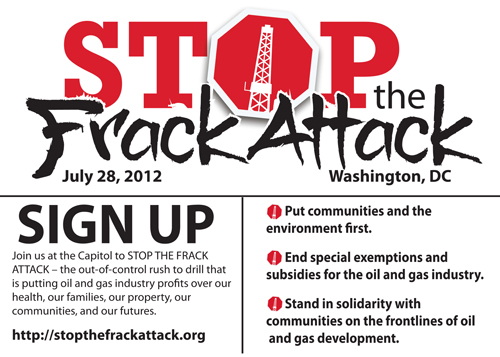 There are a bunch of grassroots groups endorsing and planning a late July series of actions in Washington DC aimed at countering the surge of fracking going on nationwide. The decentralized nature of the thing reflects the origins of the movement itself – one born inside the gas fields, not the Beltway. This is a good thing. The downside is that none of these groups have the kinds of budgets that allow them to go out and book fleets of buses or floors of hotels on spec. Nevertheless, they're trying to make it easy and cheap for you to do-it-yourself online with advice and listing and a checklist for booking buses and connecting you with housing opportunities in DC. You don't have to be a college kid with a sleeping bag. You can be a middle-aged couple with kids. They'll find spaces with real beds. Here's the FAQ page that can get you started.
There are a bunch of grassroots groups endorsing and planning a late July series of actions in Washington DC aimed at countering the surge of fracking going on nationwide. The decentralized nature of the thing reflects the origins of the movement itself – one born inside the gas fields, not the Beltway. This is a good thing. The downside is that none of these groups have the kinds of budgets that allow them to go out and book fleets of buses or floors of hotels on spec. Nevertheless, they're trying to make it easy and cheap for you to do-it-yourself online with advice and listing and a checklist for booking buses and connecting you with housing opportunities in DC. You don't have to be a college kid with a sleeping bag. You can be a middle-aged couple with kids. They'll find spaces with real beds. Here's the FAQ page that can get you started.
The event is more than a rally. Its a four-day extravaganza in which you'll be able to meet your peers from all over the country and receive new ideas and information you can bring home to use in your own fight. Although it's not a Carribbean cruise, you'll more than get your money's worth. Here's the schedule
Wednesday- July 25th
Trainings
6:30pm-8:00pm Evening Lobbying and Marshall Trainings
Location: TBA
These trainings are not required for people who are lobbying, but we highly recommend that you attend. We will discuss how to lobby, what our asks to members are, what to expect from lobbying meetings and more importantly how to get around the Hill! We will also be having a Marshall Training where we will go over conflict resolution and the plan for the march and fracking water drop-off. We’ll also give out some other roles that we need filled to make sure STFA goes off without a hitch.
Thursday- July 26th
Lobby Day
9:00am-5:00pm Lobbying at the US Capitol
Location: US Capitol Visitor Center (we will have a space there all day)
After being trained the night before, we will hit the pavement of Capitol Hill and bring our message to our members of Congress. Lobbying is a tactic that is as old as government itself, and is a great way to create the pressure needed to close the loopholes in the Clean Water and Clean Air Acts. We will also take a group photo at noon on the steps of the Capitol!
More questions? Concerns? Shoot us an email: info@stopthefrackattack.org
Friday- July 27th
Stop the Frack Attack Gathering
10:00am- Noon: Trainings
Location: St. Stephens Church, 1525 Newton St. NW Washington, DC 20006
You’ve told us you want training before our day of action. Please fill out this survey to help us decide the topic of our fourth training! Check out the survey here!
1:00pm- 5:00pm: Strategy Session
Fracktivists from far and wide are coming to DC, and it’s time to figure out how we are actually going to win. We will break up by geographic regions, with a separate youth group, and talk strategy. What’s working? What’s not? What can we do better? These are the questions we hope to answer.
6:30-8:30: Town hall
We are working hard to get this event off the ground and we are gaining some traction, consider this the pre-rally. Our goal is to get someone from the Obama Administration here to talk to us about fracking and then have an open Q&A session… word on the street is it might be someone big, we’ll keep you posted!
Saturday- July 28th
Rally and March
2:00pm Rally
Location: The West Lawn of the Capitol
This is the big day, we are organizing to get as many people as possible! We have people coming from Texas, West Virginia, New York, Vermont, and even Australia. If you want to help get people there you can organize a bus! This rally will give us the energy needed to take our demands to the corporate powers pushing fracking onto our communities.
3:30 pm March
Location: The Streets of DC
After getting pumped up by our awesome speakers, it’s time to hit the streets. We will make a special delivery to the American Petroleum Institute and American Natural Gas Association. They say fracking is good for our water, we say nay and have the water to prove it!
And here's the mission statement for the action:
A rush to drill is sweeping the United States. Across the country, the oil and gas industry is surging into new areas as quickly and cheaply as possible.
And they have been using techniques like hydraulic fracturing (“fracking”) long before we fully understand the extent of the negative impacts on the health of the local people, communities, water, air, climate, and other critical resources.
Landowners and communities are struggling to cope: Existing laws are outdated and loophole-riddled, and enforcement is universally inadequate and underfunded. We battle a persistent myth that gas is a “clean” energy – which is not only false, but keeps us from moving towards truly clean energy and ending our reliance on fossil fuels.
The result: as industry rakes in record profits from fracking-enabled drilling, it passes on drilling’s heaviest costs to landowners, local communities and future generations. That’s because elected leaders (sometimes influenced by dirty energy money) too often refuse to hold the industry accountable for the damage they cause, or require them to prevent it.
The rush to drill, and the tragic consequences that follow, has made fracking a household word. In the process it has made “fracktivists” out of thousands of ordinary citizens — including some who regard “environmentalist” as a dirty word. Some are working to prevent fracking in their communities. Those already affected are fighting to protect their air, water, and health.
We all want to STOP THE FRACK ATTACK – the out-of-control rush to drill that is putting oil and gas industry profits over our health, our families, our property, our communities, and our futures.
Now is the time for us all to unite and demand that decisionmakers inside the Beltway hear our voice and take action to change the way the oil and gas industry operates in this country.
On July 28th, 2012, we invite community members and organizations everywhere to join us in Washington, D.C. for a rally at the Capitol to demand no more drilling that harms public health, water, and air. Instead of pushing for the increased use of oil and gas, elected officials and public agencies must insist that the industry stop all drilling that is dirty and dangerous, and put communities and the environment first, starting by removing special exemptions and subsidies for the oil and gas industry.
Join community leaders, celebrities and policymakers and add your voice to the call for a clean, fossil fuel free energy future.
Won’t you join us?
Signed,
Advisory Council:
Julie Archer, West Virginia
Stephen Cleghorn, Pennsylvania
John Fenton, Wyoming
Robert Finne, Arkansas
Rick Humphreys, West Virginia
Jenny Lisak, Pennsylvania
Kari Matsko, Ohio
Jill Morrison, Wyoming
Calvin Tillman, Texas
Matia Vanderbilt, Maryland
Jill Wiener, New York
Fracking, and Levees, and Dams, Oh My! Army Corps of Engineers Meets With Dallas City Hall
 Dallas City Hall staff met with representatives of the Army Corps of Engineers last week to get a briefing on the Corps' enforcement of its recommended 3000 foot "protective zone" between natural gas drilling sites and any dams, levees, and other water retention structures.
Dallas City Hall staff met with representatives of the Army Corps of Engineers last week to get a briefing on the Corps' enforcement of its recommended 3000 foot "protective zone" between natural gas drilling sites and any dams, levees, and other water retention structures.
The Corps is engaged in an on-going study of how appropriate it is to apply that standard to North Texas geology. Originally conceived in the mid-1990's to account for structural integrity issues related to conventional horizontal drilling, the Corps has been using it for over a year in DFW, where it's become a factor in drilling around Joe Pool Lake dam and the Trinity river levees running down the middle of Dallas. According to the Corps, that study is scheduled to be complete in September – or right about the time the Dallas City Council is due to take a final vote on a new drilling ordinance that would, among other things, govern when and where drilling could take place in the city.
Most pressing for the Corps at last week's meeting was finding out if: 1) there any permits pending within 3000 feet of the levees or Joe Pool Dam?, and, 2) Were there any plans to allow injected waste wells in the city? City staff said there had been an informal moratorium on moving any permits forward since the city took up the job of re-writing its obsolete drilling ordicnance a year and a half ago and that the City's gas drilling task force had recommended allowing no injection wells into the city. Big audbile sigh from the Corps. Apparently, they're big believers in the evidence pointing to injection wells as the cause of sizable earthquakes in Texas and elsewhere.
This meeting still begs the question that citizen-activist Raymond Crawford has been trying to get answered for none months now: Did the Corps send a letter last year to Dallas at the same time it sent one to Grand Prairie asking that a moratorium be placed on any drilling permits within 3000 feet of a dam or levee, and if it did, what was Dallas City Hall's response? We still don't know the definitive answer to that but it looks increasingly academic in the face of the Corps' re-evaluation of the 3000 standard.
If 3000 feet was considered an appropriate distance for traditional vertical drilling in the mid-1990's, it's hard to believe that modern-day vertical fracking will allow that number to decrease at all. And if one considers that the standard first applied to an oil or gas well that was directly underneath the well head, i.e straight down, and then think about the explosive forces fracking employs up to a horizontal mile away from the well head, the distance requirement should probably apply to where the well ends, not just begins.
There's no question that whatever the Corps' new criteria are for fracking around places that can break open and cause problems, it will have an immediate and important impact on not just how Dallas regulates fracking, but lots of other communities in North Texas as well. What's not clear is if the Corps is doing the same kind of re-evaluation of the 3000 foot rule for local geology in the Eagle Shale in South Texas, the Marcellus Shale in Pennsylvania and other drilling hot spots. If it is, will those be finished by September as well. If not, how come it's only the Barnett Shale that's receiving this treatment?
